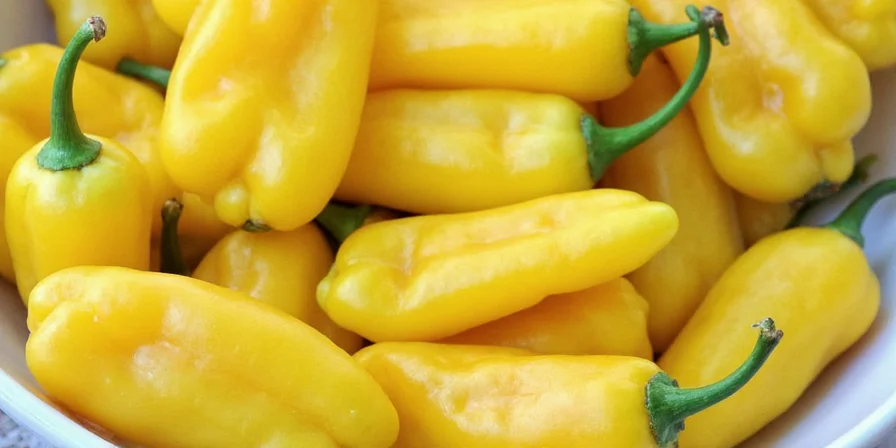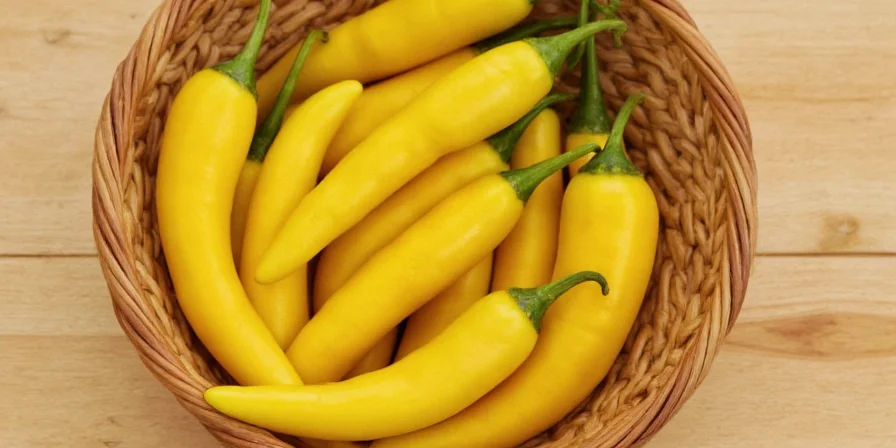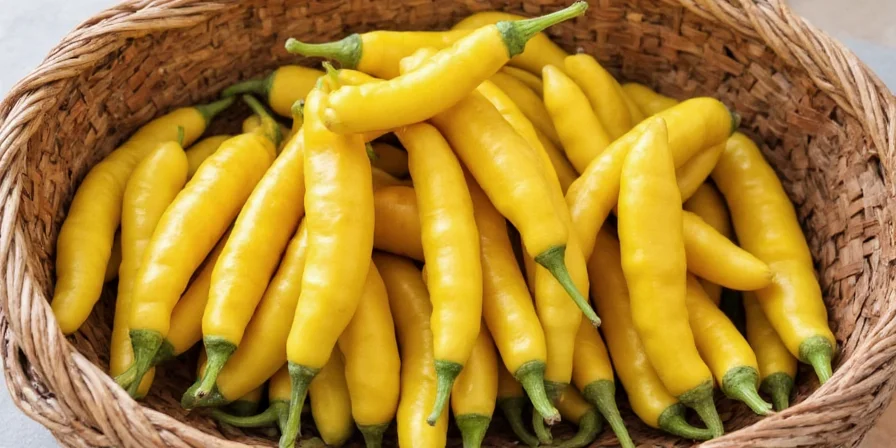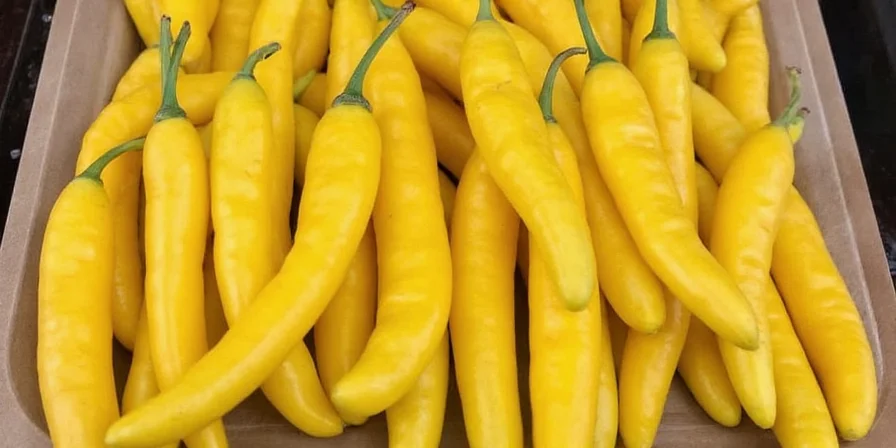Chile Amarillo: The Golden Fire of Global Spice Traditions – A Practical Guide with Sizzling Tips!
Table of Contents
- What is Chile Amarillo?
- Origins & Cultural Significance
- Heat Level & Flavor Profile
- 5 Must-Know Cooking Tips with Chile Amarillo
- Flavor Pairings: What Goes Well with Chile Amarillo?
- Recipe Spotlight: Three Fiery Favorites
- Substitutes & Alternatives
- Where to Buy & How to Store
- Conclusion: Spicing Up Life with Chile Amarillo
What is Chile Amarillo?
The name chile amarillo literally means “yellow chili” in Spanish, and it’s not just one specific pepper — it can refer to a few different yellow chilies used across Latin America, especially in Mexican cuisine.
In Mexico, chile amarillo often refers to the Capsicum annuum variety known as the Sonoran yellow or the Chihuacle amarillo, depending on the region. These peppers range from medium to hot on the Scoville scale, making them perfect for those who like a little kick without going full habanero mode.

Fig. 1 – Fresh chiles amarillos ready for use in traditional dishes.
Origins & Cultural Significance
Chile amarillo plays a vital role in the cuisines of Oaxaca, Chiapas, and other southern regions of Mexico. It's often used dried and ground into powders or pastes that give sauces their signature tangy heat.
Historically, these peppers were part of trade routes between Central and South America, helping to spread their golden glow across global spice traditions. Today, you'll find chile amarillo featured in everything from salsas to soups, adding both color and character.

Fig. 2 – Dried chiles amarillos sold alongside other regional spices at a traditional market.
Heat Level & Flavor Profile
| Pepper Name | Scoville Heat Units (SHU) | Main Flavor Notes |
|---|---|---|
| Chile Amarillo | 30,000 – 60,000 SHU | Tangy, Citrusy, Earthy |
| Jalapeño | 2,500 – 8,000 SHU | Grassy, Green |
| Habanero | 100,000 – 350,000 SHU | Fruity, Floral |
As you can see, chile amarillo brings a bold heat level paired with a unique citrusy brightness. This makes it ideal for balancing richness in stews or giving seafood a zesty twist.

Fig. 3 – Size and color comparison of common chili peppers.
5 Must-Know Cooking Tips with Chile Amarillo
- Toast Before Grinding: Toasting dried chiles enhances their nutty, earthy depth. Simply dry roast over medium heat until fragrant, then cool before grinding.
- Soak for Smoother Sauces: Soaking dried chiles in warm water or broth softens them, making blending easier and resulting in silkier sauces.
- Pair with Cilantro & Lime: Its bright, citrusy notes make chile amarillo a natural match for lime juice and fresh cilantro — try in tacos or ceviche.
- Add at the Right Time: For a subtler heat, add towards the end of cooking. For deeper infusion, add early during sautéing or simmering.
- Use Gloves When Handling: Capsaicin burns, folks! Wear gloves when chopping or de-seeding to avoid accidental eye contact.

Fig. 4 – Toasting dried chiles in a dry pan to unlock their aromatic oils.
Flavor Pairings: What Goes Well with Chile Amarillo?
Because of its balanced heat and citrusy brightness, chile amarillo pairs well with:
- Fish & Seafood – Try it in shrimp tacos or grilled snapper.
- Tomatoes & Tomatillos – A great base for tangy green or red sauces.
- Eggs – Elevate your huevos rancheros or breakfast burritos.
- Avocado – Adds a spicy contrast to guacamole or avocado toast.
- Beans & Grains – Perfect for spicing up rice bowls or lentil dishes.

Fig. 5 – Shrimp tacos topped with a homemade chile amarillo crema.
Recipe Spotlight: Three Fiery Favorites
- Chile Amarillo Salsa
Blend soaked and roasted chiles with garlic, tomatoes, onion, and lime. Add salt to taste and drizzle with olive oil for a restaurant-quality dip. - Yellow Mole
A variation of Oaxacan mole amarillo, this version uses dried chiles, sesame seeds, almonds, and spices. Serve with chicken or enchiladas for a soul-warming meal. - Spiced Fish Tacos
Marinate white fish in a paste of chile amarillo, cumin, and lime. Pan-sear and serve in warm corn tortillas with cabbage slaw and avocado crema.
Substitutes & Alternatives
If you can’t find chile amarillo, here are some good alternatives:
- Serrano Pepper: Similar heat, but less citrusy. Use fresh or roasted.
- Ancho + Yellow Bell Pepper: Mix ancho for heat and bell pepper for color and sweetness.
- Poblano (Roasted): Milder but offers a smoky, rich alternative.
- Commercial Chili Powders: Look for blends labeled “amarillo” or “yellow chili powder,” though they may be mixed with other spices.
Where to Buy & How to Store
You can usually find chile amarillo at Latin American markets, specialty spice shops, or online retailers. Look for plump, evenly colored dried pods with no signs of mold or brittleness.
Storage Tips:
- Dried Peppers: Keep in an airtight container away from light and moisture. Lasts up to a year.
- Ground Powder: Store in a cool, dark place in a sealed jar. Best within six months for optimal potency.
- Whole vs. Ground: Whole dried peppers last longer than ground versions — grind as needed for fresher flavor.
Conclusion: Spicing Up Life with Chile Amarillo
Whether you're deep-frying tacos, slow-cooking stews, or experimenting with new global flavors, chile amarillo is a versatile powerhouse that deserves a spot in your spice rack.
From its sunny hue to its citrusy kick, it’s more than just a spice — it’s a bridge between tradition and modern creativity. So go ahead, embrace the golden fire, and let your next dish shine with the spirit of chile amarillo.











 浙公网安备
33010002000092号
浙公网安备
33010002000092号 浙B2-20120091-4
浙B2-20120091-4